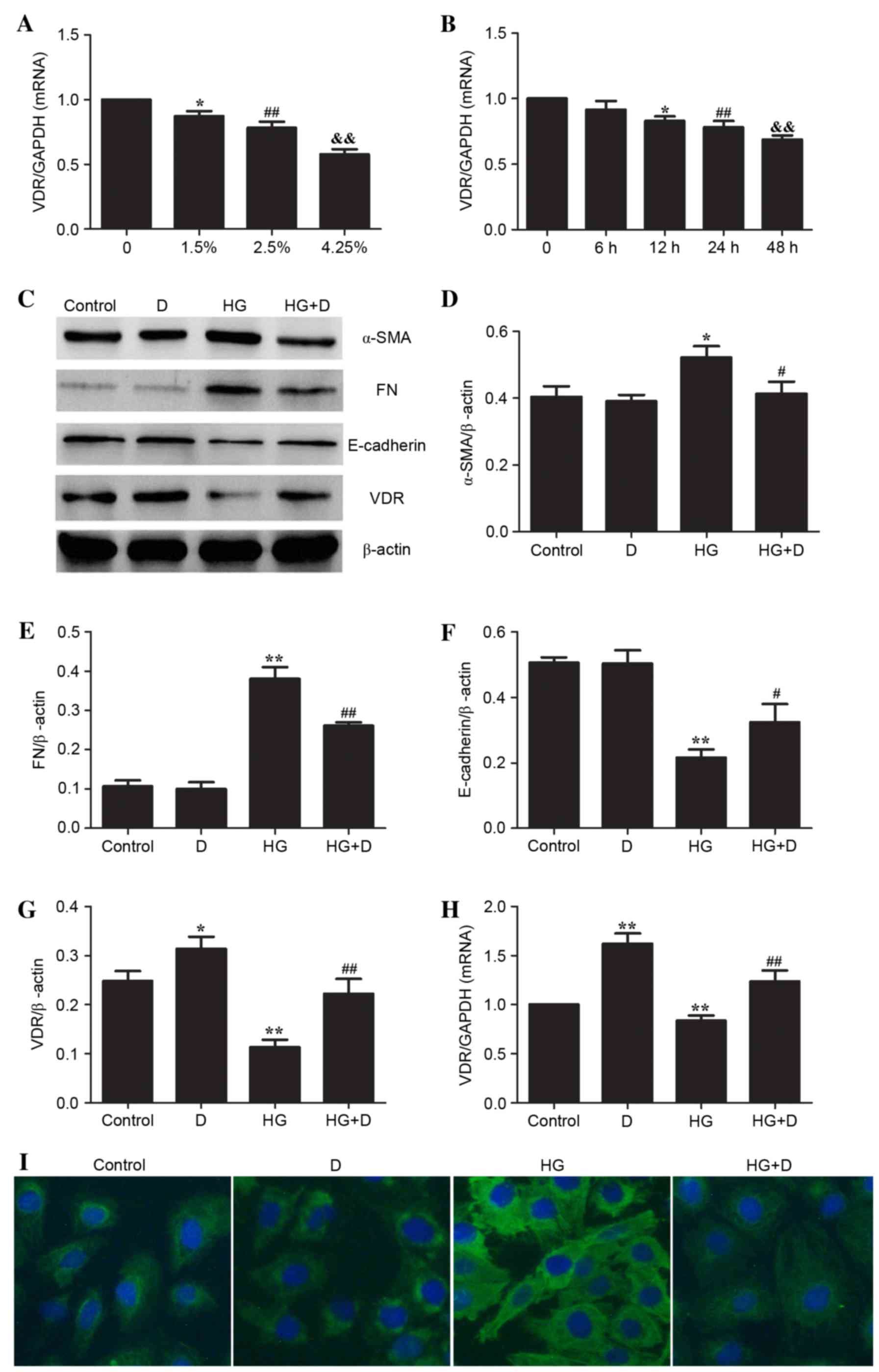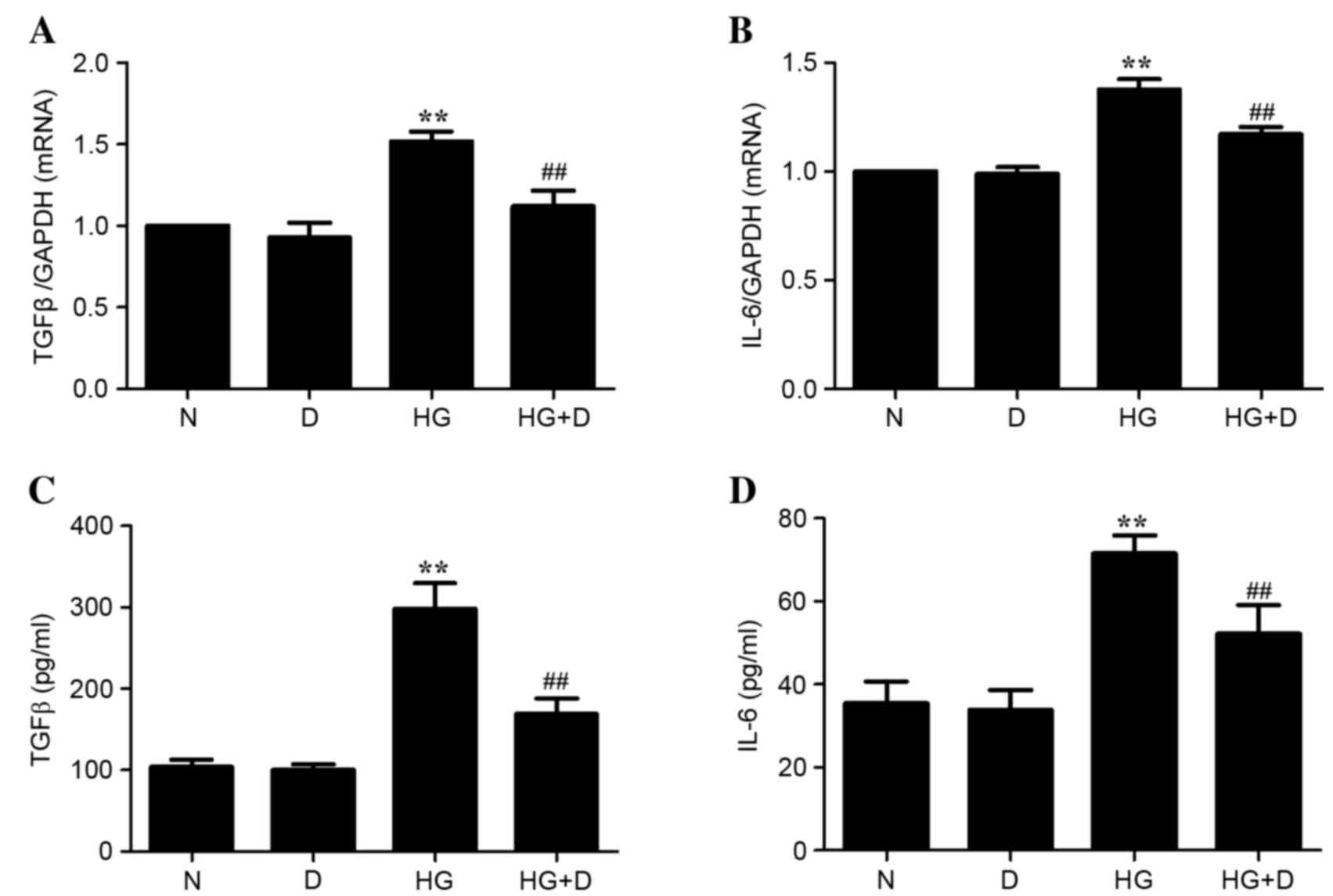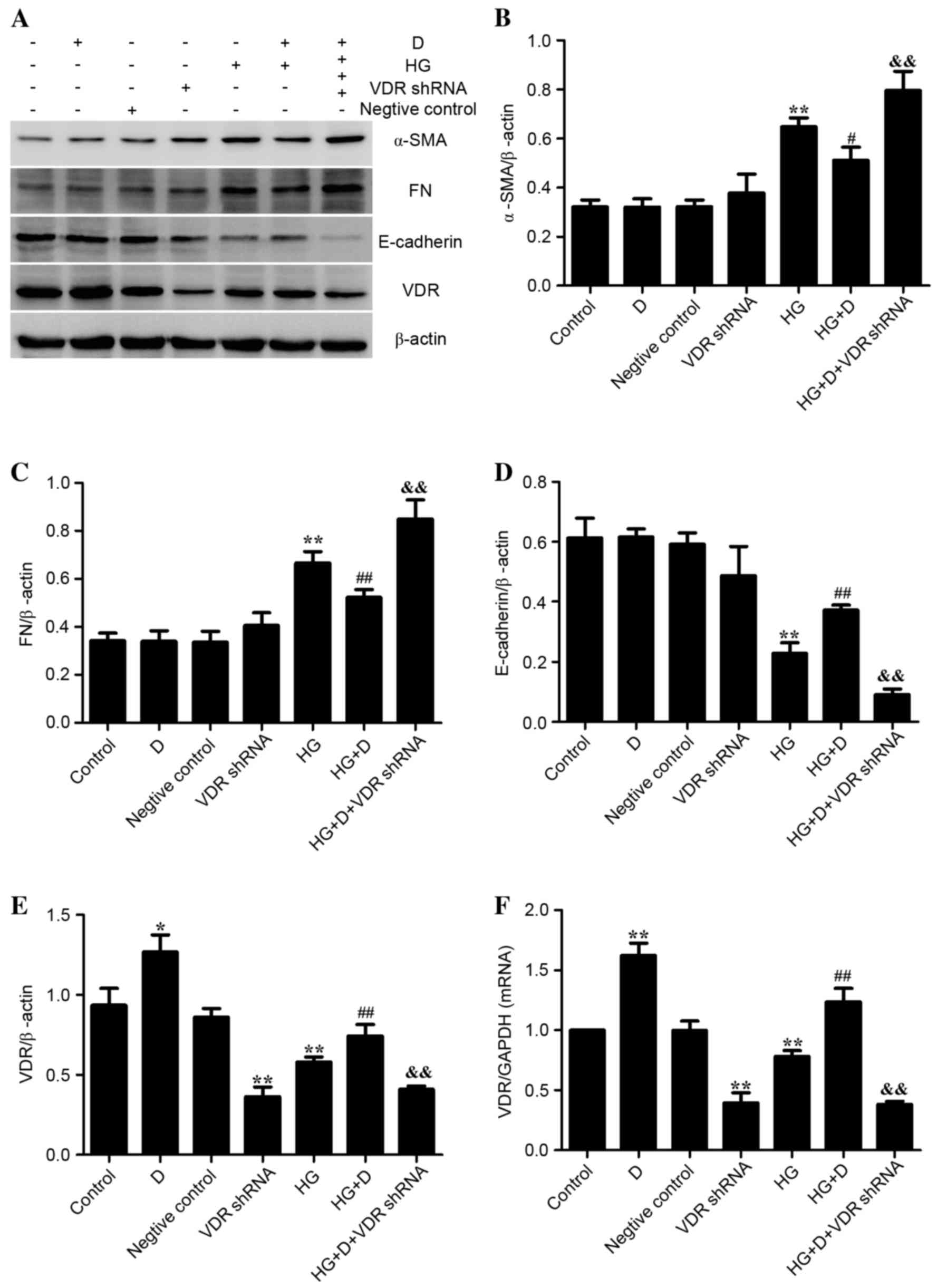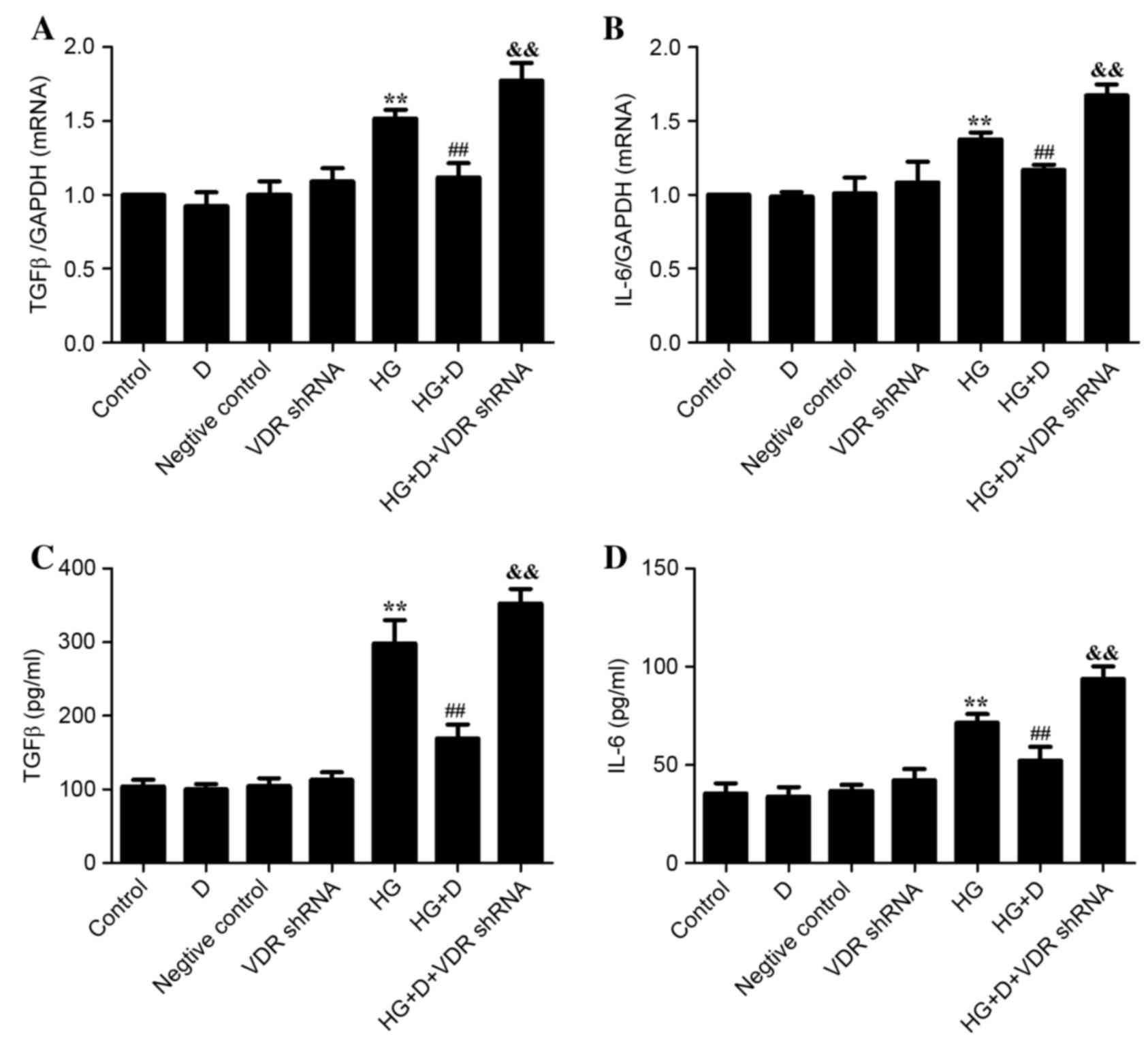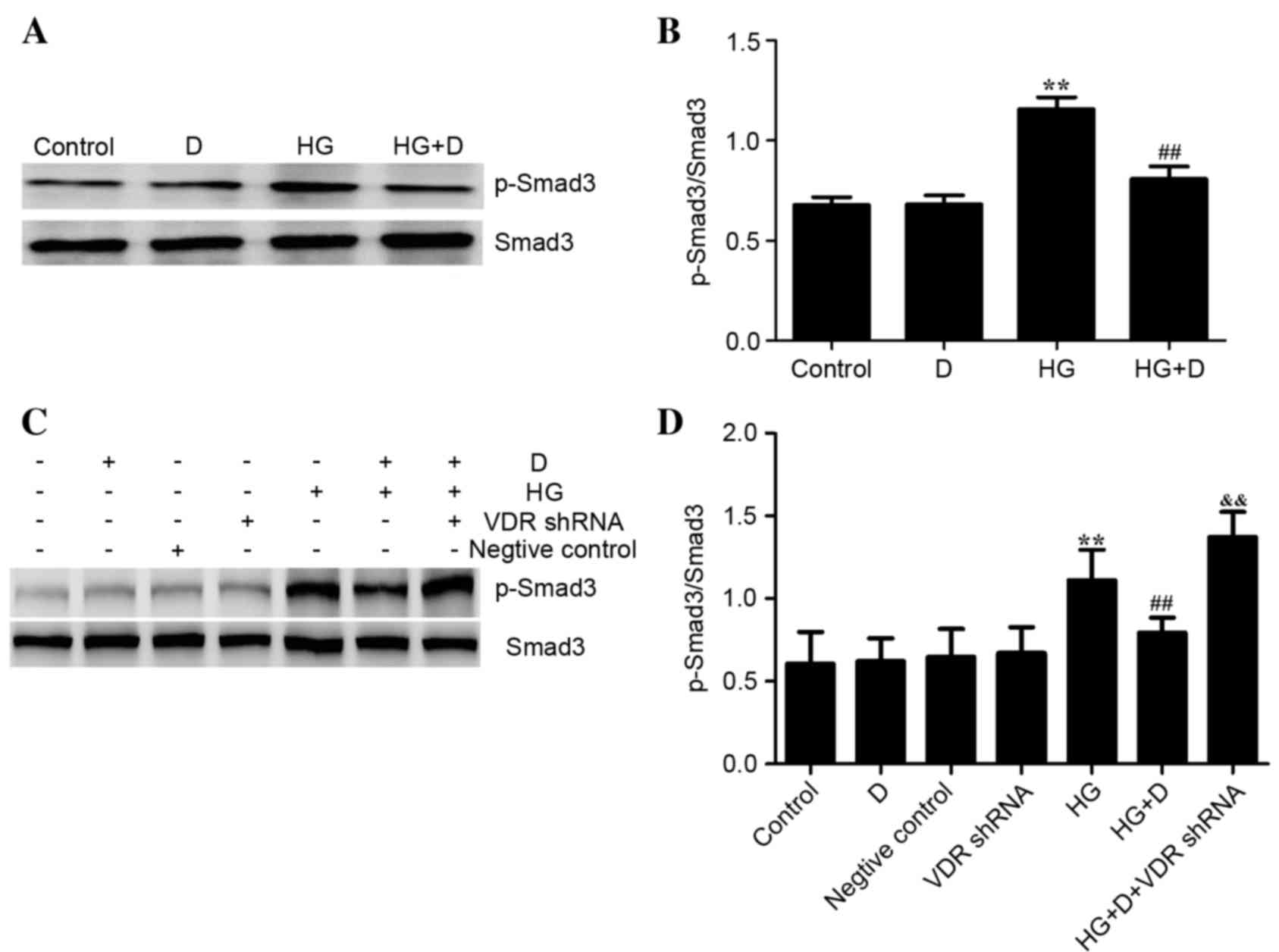|
1
|
Williams JD, Craig KJ, Topley N, Von
Ruhland C, Fallon M, Newman GR, Mackenzie RK and Williams GT:
Peritoneal Biopsy Study Group: Morphologic changes in the
peritoneal membrane of patients with renal disease. J Am Soc
Nephrol. 13:470–479. 2002.PubMed/NCBI
|
|
2
|
Ding X, Ma M, Teng J, Shao F, Teng RK,
Zhou S, Zhang Y, Wu E and Wang X: Numb induces E-cadherin adhesion
dissolution, cytoskeleton reorganization, and migration in tubular
epithelial cells contributing to renal fibrosis. Curr Mol Med.
15:368–379. 2015. View Article : Google Scholar : PubMed/NCBI
|
|
3
|
Zhao S, Zhang Y, Zheng X, Tu X, Li H, Chen
J, Zang Y and Zhang J: Loss of microRNA-101 promotes epithelial to
mesenchymal transition in hepatocytes. J Cell Physiol.
230:2706–2717. 2015. View Article : Google Scholar : PubMed/NCBI
|
|
4
|
Strippoli R, Loureiro J, Moreno V,
Benedicto I, Lozano ML, Barreiro O, Pellinen T, Minguet S, Foronda
M, Osteso MT, et al: Caveolin-1 deficiency induces a
MEK-ERK1/2-Snail-1-dependent epithelial-mesenchymal transition and
fibrosis during peritoneal dialysis. EMBO Mol Med. 7:3572015.
View Article : Google Scholar : PubMed/NCBI
|
|
5
|
He L, Lou W, Ji L, Liang W, Zhou M, Xu G,
Zhao L, Huang C, Li R, Wang H, et al: Serum response factor
accelerates the high glucose-induced Epithelial-to-Mesenchymal
Transition (EMT) via snail signaling in human peritoneal
mesothelial cells. PLoS One. 9:e1085932014. View Article : Google Scholar : PubMed/NCBI
|
|
6
|
Thiery JP and Sleeman JP: Complex networks
orchestrate epithelial-mesenchymal transitions. Nat Rev Mol Cell
Biol. 7:131–142. 2006. View
Article : Google Scholar : PubMed/NCBI
|
|
7
|
Liu J, Zeng L, Zhao Y, Zhu B, Ren W and Wu
C: Selenium suppresses lipopolysaccharide- induced fibrosis in
peritoneal mesothelial cells through inhibition of
epithelial-to-mesenchymal transition. Biol Trace Elem Res.
161:202–209. 2014. View Article : Google Scholar : PubMed/NCBI
|
|
8
|
Yu MA, Shin KS, Kim JH, Kim YI, Chung SS,
Park SH, Kim YL and Kang DH: Hgf and bmp-7 ameliorate high
glucose-induced epithelial-to-mesenchymal transition of peritoneal
mesothelium. J Am Soc Nephrol. 20:567–581. 2009. View Article : Google Scholar : PubMed/NCBI
|
|
9
|
Zhang X, Wang J, Fan Y, Yang L, Wang L and
Ma J: Zinc supplementation attenuates high glucose-induced
epithelial-to-mesenchymal transition of peritoneal mesothelial
cells. Biol Trace Elem Res. 150:229–235. 2012. View Article : Google Scholar : PubMed/NCBI
|
|
10
|
Kanasaki K, Taduri G and Koya D: Diabetic
nephropathy: The role of inflammation in fibroblast activation and
kidney fibrosis. Front Endocrinol (Lausanne). 4:72013.PubMed/NCBI
|
|
11
|
Gocek E, Kiełbiński M, Wyłób P, Kutner A
and Marcinkowska E: Side-chain modified vitamin D analogs induce
rapid accumulation of VDR in the cell nuclei proportionately to
their differentiation-inducing potential. Steroids. 73:1359–1366.
2008. View Article : Google Scholar : PubMed/NCBI
|
|
12
|
Kim CS, Joo SY, Lee KE, Choi JS, Bae EH,
Ma SK, Kim SH, Lee J and Kim SW: Paricalcitol attenuates
4-hydroxy-2-hexenal-induced inflammation and epithelial-mesenchymal
transition in human renal proximal tubular epithelial cells. PLoS
One. 8:e631862013. View Article : Google Scholar : PubMed/NCBI
|
|
13
|
Fischer KD and Agrawal DK: Vitamin D
regulating TGF-β induced epithelial-mesenchymal transition. Respir
Res. 15:1462014. View Article : Google Scholar : PubMed/NCBI
|
|
14
|
Yang L, Wang J, Fan Y, Chen S, Wang L and
Ma J: Effect of 1,25(OH)(2)D(3) on rat peritoneal mesothelial cells
treated with high glucose plus lipopolysaccharide. Cell Immunol.
271:173–179. 2011. View Article : Google Scholar : PubMed/NCBI
|
|
15
|
Yao Q, Pawlaczyk K, Ayala ER, Styszynski
A, Breborowicz A, Heimburger O, Qian JQ, Stenvinkel P, Lindholm B
and Axelsson J: The role of the TGF/Smad signaling pathway in
peritoneal fibrosis induced by peritoneal dialysis solutions.
Nephron Exp Nephrol. 109:e71–e78. 2008. View Article : Google Scholar : PubMed/NCBI
|
|
16
|
Zhu L, Kong M, Han YP, Bai L, Zhang X,
Chen Y, Zheng S, Yuan H and Duan Z: Spontaneous liver fibrosis
induced by long term dietary vitamin D deficiency in adult mice is
related to chronic inflammation and enhanced apoptosis. Can J
Physiol Pharmacol. 93:385–394. 2015. View Article : Google Scholar : PubMed/NCBI
|
|
17
|
Greń A: Effects of vitamin E, C and D
supplementation on inflammation and oxidative stress in
streptozotocin-induced diabetic mice. Int J Vitam Nutr Res.
83:168–175. 2013. View Article : Google Scholar : PubMed/NCBI
|
|
18
|
Duggan C, de Dieu Tapsoba J, Mason C,
Imayama I, Korde L, Wang CY and McTiernan A: Effect of Vitamin D3
supplementation in combination with weight loss on inflammatory
biomarkers in postmenopausal women: a randomized controlled trial.
Cancer Prev Res (Phila). 8:628–635. 2015. View Article : Google Scholar : PubMed/NCBI
|
|
19
|
Zhou Q, Yang M, Lan H and Yu X: miR-30a
negatively regulates TGF-β1-induced epithelial-mesenchymal
transition and peritoneal fibrosis by targeting Snai1. Am J Pathol.
183:808–819. 2013. View Article : Google Scholar : PubMed/NCBI
|
|
20
|
Xiong M, Gong J, Liu Y, Xiang R and Tan X:
Loss of vitamin D receptor in chronic kidney disease: A potential
mechanism linking inflammation to epithelial-to-mesenchymal
transition. Am J Physiol Renal Physiol. 303:F1107–F1115. 2012.
View Article : Google Scholar : PubMed/NCBI
|
|
21
|
Upadhyay SK, Verone A, Shoemaker S, Qin M,
Liu S, Campbell M and Hershberger PA: 1,25-dihydroxyvitamin D3
(1,25(OH)2D3) signaling capacity and the epithelial-mesenchymal
transition in non-small cell lung cancer (NSCLC): Implications for
Use of 1,25(OH)2D3 in NSCLC treatment. Cancers (Basel).
5:1504–1521. 2013. View Article : Google Scholar : PubMed/NCBI
|
|
22
|
Li Z, Guo J, Xie K and Zheng S: Vitamin D
receptor signaling and pancreatic cancer cell EMT. Curr Pharm Des.
21:1262–1267. 2015. View Article : Google Scholar : PubMed/NCBI
|
|
23
|
Aroeira LS, Aguilera A, Sánchez-Tomero JA,
Bajo MA, del Peso G, Jiménez-Heffernan JA, Selgas R and
López-Cabrera M: Epithelial to mesenchymal transition and
peritoneal membrane failure in peritoneal dialysis patients:
Pathologic significance and potential therapeutic interventions. J
Am Soc Nephrol. 18:2004–2013. 2007. View Article : Google Scholar : PubMed/NCBI
|
|
24
|
Del Peso G, Jiménez-Heffernan JA, Bajo MA,
Aroeira LS, Aguilera A, Fernández-Perpén A, Cirugeda A, Castro MJ,
De Gracia R, Sánchez-Villanueva R, et al: Epithelial-to-mesenchymal
transition of mesothelial cells is an early event during peritoneal
dialysis and is associated with high peritoneal transport. Kidney
Int Suppl. S26–S33. 2008. View Article : Google Scholar : PubMed/NCBI
|
|
25
|
Yokoi H, Kasahara M, Mori K, Ogawa Y,
Kuwabara T, Imamaki H, Kawanishi T, Koga K, Ishii A, Kato Y, et al:
Pleiotrophin triggers inflammation and increased peritoneal
permeability leading to peritoneal fibrosis. Kidney Int.
81:160–169. 2012. View Article : Google Scholar : PubMed/NCBI
|
|
26
|
Gangji AS, Brimble KS and Margetts PJ:
Association between markers of inflammation, fibrosis and
hypervolemia in peritoneal dialysis patients. Blood Purif.
28:354–358. 2009. View Article : Google Scholar : PubMed/NCBI
|
|
27
|
Lee TW, Kao YH, Lee TI, Chang CJ, Lien GS
and Chen YJ: Calcitriol modulates receptor for advanced glycation
end products (RAGE) in diabetic hearts. Int J Cardiol. 173:236–241.
2014. View Article : Google Scholar : PubMed/NCBI
|















